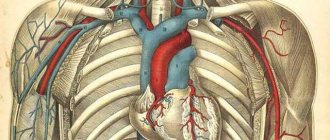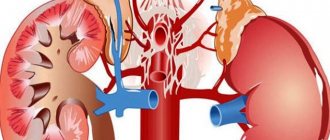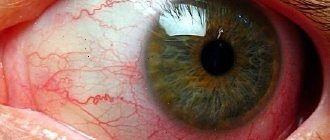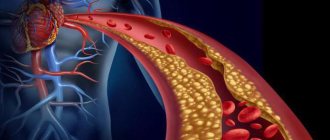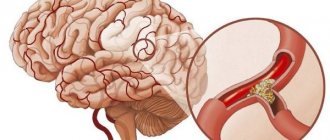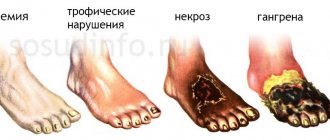Atherosclerosis is a systemic disease that can attack almost any group of blood vessels. If the clinical picture is accompanied by symptoms of brain disorders, we may be talking about one of the types of pathology - atherosclerosis of the brachiocephalic vessels. This form is characterized by some difficulties in therapy and a high risk of stroke and changes in the functions of the central nervous system, which cannot be eliminated by methods available to modern medicine.
What it is?
The first thing worth mentioning when describing BCA atherosclerosis is that this is a disease that affects the vessels of the brachiocephalic trunk. These include the vertebral and carotid arteries and their branches, as well as the subclavian artery. This form of atherosclerotic lesion is considered the most common, since there are many branches in this area of the circulatory system. They most often form atherosclerotic deposits, known as plaques.
As a result of the gradual narrowing of the vessels of the brachiocephalic trunk, the brain is primarily affected. As the pathological process progresses, other organs are included, the functions of which are partially or completely controlled by the central nervous system. Experts divide BCA atherosclerosis into two groups:
- Non-stenotic atherosclerosis of the brachiocephalic arteries is a type that involves the least pronounced changes. This pathology is accompanied by the formation of longitudinal lipid deposits without sharp narrowing of the lumen of blood vessels. With it, despite this, the capacity of the arteries is noticeably reduced.
- Stenosing atherosclerosis of BCA is a more complex type, in which deposits in the vessels are located transversely and have a more pronounced thickness. Under plaques of this type, degenerative and destructive processes more often occur, as a result of which the walls of blood vessels harden and narrow. Blood flow in this form of the disease is quite limited. Often there is a complete blockage of blood vessels.
In addition, experts classify the disease depending on which vessels have undergone the most pronounced changes.
Mechanism of development of atherosclerosis of BCA
With the development of a stenosing form of atherosclerosis, the work of the blood flow depends on the structure of the circle of Willis, which in a small number of people has an ideal shape in structure and has no deviations.
Therefore, with the development of atherosclerosis of the stenosing form with insufficient blood circulation, cerebral hemorrhages (stroke) and discirculatory type encephalopathy are much more common.
The most common localization of cholesterol plaques is in the following places:
- In areas of vessels where they divide into smaller branches;
- On the carotid artery, where it divides into an external branch and an internal branch.
The mechanism of development of a complicated form of atherosclerosis is interconnected with hemodynamics, when partial occlusion or complete blockage of the artery occurs. Also, the cause of a complicated form can be emboli, which become part of an atherosclerotic plaque in the carotid vessels.
The development of complications of atherosclerosis may be caused by microthrombi that leave the site of atherosclerotic lesions and enter smaller blood arteries.
Atherosclerosis of extracranial parts most often disrupts hemodynamics in the BCA, and blockage of the brain segments of the BCA most often causes thromboembolism.
The risk of developing a cerebral stroke due to BCA atherosclerosis increases:
- If a pathology of thrombosis occurs;
- Depending on the loose structure of the cholesterol plaque;
- In case of disease, vascular stenosis.
In addition to the systemic disease atherosclerosis, the following pathologies can develop in the brachiocephalic arteries:
- Bends in the walls of blood vessels;
- The appearance of loops in the arteries;
- BCA aneurysm - this pathology is quite rare in these vessels.
Characteristic symptoms
The appearance of the main initial signs of atherosclerosis of the vessels of the brachiocephalic trunk is in most cases delayed, that is, the patient may suspect the presence of the disease after a long time from the onset of the pathological process. This is due to the fact that the increase in plaques and, accordingly, the decrease in the diameter of the arteries occurs slowly. On average, at least 5 years pass from the onset of the disease to its manifestation (serious complications and the appearance of systematic symptoms).
At the development stage, BCA atherosclerosis is accompanied by ambiguous symptoms:
- mild dizziness, which intensifies with the application of psycho-emotional and physical efforts;
- deterioration of brain function - inability to concentrate, decrease in overall mental performance;
- pulsation of the temporal vessels, which can be detected independently by placing your fingers on the temporal cavity - the symptom appears and intensifies with physical and emotional stress;
- tinnitus, reminiscent of the sound of passing cars, is a symptom characteristic of atherosclerosis of the extracranial parts of the BCA.
As non-stenotic atherosclerosis of the intracranial brachiocephalic arteries progresses, patients complain of a complex deterioration in their health. In addition to the symptoms described above, there is a decrease in vision, hearing, significant memory deterioration, even blackouts. This clinical picture is a consequence of total vascular insufficiency of the central nervous system.
The manifestations of advanced atherosclerosis of the extracranial sections of the brachiocephalic arteries with stenosis look somewhat different. This type of disease is accompanied by numbness of the right upper limb, which can weaken and intensify depending on the degree of load on the body. In addition, patients complain of intense headaches, attacks of which occur suddenly and reach a peak within a few minutes.
If symptoms are ignored and treatment is postponed to a later date, BCA atherosclerosis can result in a stroke, which in a third of cases ends in death or severe disability.
With deep damage to the vessels of the brachiocephalic trunk, significant changes are observed that leave no doubt that the patient has atherosclerosis. In addition to memory loss, speech disturbances and changes in the patient's personality are observed. At this stage, it becomes impossible to return a person to his previous life, since the changes become irreversible.
Pathologies of the brachiocephalic arteries - diagnosis and treatment in St. Petersburg, price
The brachiocephalic vessels are the most significant in the body, as they provide blood supply (to the central nervous system) to the brain and upper extremities.
The functioning of brain structures and the condition of head tissues depend on them. The vessels of this localization are represented by the brachiocephalic trunk, the left subclavian artery and the common carotid artery.
Smaller branches extend from the presented vessels, which are directed to different parts of the head and upper limbs.
The left common carotid artery arises from the aortic arch, the right from the brachiocephalic trunk. Both common carotid arteries are divided into external and internal. The external carotid artery has 9 branches that are directed to the external parts of the head and neck organs. Branches of the internal carotid artery provide blood supply to all structures of the brain.
Paired vertebral arteries arise from the left and right subclavian arteries, run along the spine and, uniting in the cranial cavity, form the main one.
Both internal carotid and both vertebral arteries connect with each other in the cranial cavity and form the Circle of Willis - this is a large anastomosis that unites the vessels of the brain and compensates for blood flow in pathological conditions.
Pathology of the arteries of this localization can be accompanied by serious symptoms, but most importantly, it increases the likelihood of developing acute cerebrovascular accident, which often threatens the patient’s life. Depending on the location of the vascular lesion, complications associated with dysfunction of a certain area of the brain develop.
The most common cause of vascular diseases is atherosclerosis. This is a pathological metabolic process in which cholesterol metabolism products are deposited in the middle layer of the arterial wall. Over time, the wall thickens and cholesterol plaques form.
If they exist for a long time, they lead to narrowing of the lumen of the vessel, ulceration and damage to the vascular wall, followed by thrombosis and complete blockage of the artery.
More rare causes of narrowing of the brachiocephalic arteries are autoimmune inflammation of the vascular wall, compression of the artery from the outside, congenital malformations, and arterial dysplasia.
Classification of diseases
The main classification of diseases of the vascular bed of the brain depends on the cause of the development of the pathology. This is important for choosing treatment tactics that should affect the etiology. The following are the main groups of diseases of the brachiocephalic vessels:
- congenital pathology - arteries develop with anatomical anomalies, pathological tortuosity, impaired development of connective tissue areas or the muscular layer of arteries may be observed;
- atherosclerotic changes - this type of disease is the most common;
- narrowing of the lumen of the artery due to external pathology - a volumetric process or pathology of the spinal column at the site of the artery;
- inflammation of the vascular wall - vasculitis;
- alternate decreases and increases in blood pressure;
- compression of blood vessels due to pathology of the spinal column;
- aneurysm - expansion of the vessel and protrusion of its wall in the form of a “pocket”;
- changes in blood vessels due to the underlying disease (diabetes, endocrine pathology);
- consequences of injuries and surgical interventions.
If we talk about the frequency of occurrence, atherosclerosis accounts for about 90% of all cases of pathology of the brachiocephalic arteries. Atherosclerosis develops as a result of exposure to risk factors - hereditary predisposition, smoking, age-related changes, disorders of fat metabolism (chronic pathologies).
Chronic cerebrovascular diseases can be compared to a time-delayed explosive device - you never know when the mechanism will go off. However, there is always a risk to health and even life. Timely consultation with a doctor and initiation of treatment minimizes the risk of disability and death.
Why do diseases develop?
As a rule, the pathology of brachiocephalic vessels develops gradually and is based on a complex of negative factors. Let's take a closer look at what can lead to vascular pathology:
- influence of nicotine. Smoking has a negative effect on the vascular wall, arterial spasm and pressure changes, deterioration of heart function and hypoxia are also observed;
- chronic hypertension without proper treatment. Pressure changes are especially dangerous;
- dyslipidemia is a disorder of fat metabolism that occurs with atherosclerosis;
- (taking certain medications, for example, oral contraceptives, increases the risk of thromboembolic complications);
- obesity and increased body weight;
- physical inactivity – reduced physical activity;
- hormonal imbalance;
- regular stress and emotional distress;
- immunodeficiency or severe concomitant disease.
How do diseases manifest themselves?
The main symptom of pathology of the brachiocephalic arteries is stroke and transient ischemic attack (permanent or short-term cessation of blood supply to the brain). The remaining signs are not specific and require detailed diagnosis.
There are symptoms that can be classified as general, because they can accompany diseases of a different nature. This is weakness, fatigue, decreased ability to work. The difference is that they are permanent, leading to absent-mindedness and decreased attention.
Dizziness and syncope may occur - fainting, loss of consciousness. Also, you should pay attention to noise and ringing in the ears; this may indicate not only a pathology of the hearing organ, but also a circulatory disorder.
Noise and ringing in the ears, dizziness and headaches are very rarely associated with pathology of the brachiocephalic arteries
Visual impairment may be observed - the appearance of a feeling of a veil before the eyes, flickering “fly spots”. In some cases, a short-term “loss” of visual fields appears, which goes away on its own. In case of chronic cerebral circulatory failure, the patient's balance is disturbed, the gait and static position of the body become unsteady. There may be swaying when walking.
This is accompanied by nausea and impaired speech function. Speech may change - it becomes more slurred and incoherent.
The danger is that in the early stages the disease manifests itself weakly. The symptoms can be mistaken for simple fatigue. Few patients seek help in the early stages, but it is at this moment that treatment is most effective.
Methods for diagnosing pathologies
The most informative methods for diagnosing this type of disease:
- Ultrasound with duplex scanning;
- magnetic resonance angiography;
- computed tomography angiography using a contrast agent;
- direct radiocontrast angiography.
Ultrasound is the most accessible, safe technique that does not require significant costs or preparation. Provides comprehensive information about the condition of blood vessels and blood flow in them.
Tomography, both magnetic resonance and computer, are more accurate diagnostic methods. They provide complete information about the condition of the vessels by performing layer-by-layer sections. Particularly relevant for those who are preparing for treatment, as well as in false cases of the disease.
In addition, general diagnostic methods, laboratory and instrumental, are used, which can tell more about the causes of the disease and its severity.
Modern methods of treating pathology of the brachiocephalic arteries
There are conservative and surgical techniques. Drug treatment includes antiplatelet drugs, drugs to lower blood cholesterol levels, and normalize blood pressure. An important point is the formation of a healthy lifestyle, diet, moderate physical activity, and giving up bad habits.
Surgical methods are aimed at reducing the risk of stroke and complications; they are divided into open (reconstruction of arteries with elimination of the pathological focus and restoration of the lumen) and endovascular (intravascular access with balloon angioplasty in combination with stenting.
To receive treatment, you must consult a doctor. After the diagnostic methods have been carried out and an accurate diagnosis has been made, the doctor will set a date for the intervention.
The clinic has all the conditions for diagnosis, treatment and postoperative recovery. There is the possibility of long-term observation by the attending physician.
The patient's documentation and research results are stored in a special program and can be used at any time during treatment.
Source: https://www.gosmed.ru/lechebnaya-deyatelnost/spravochnik-zabolevaniy/serdechno-sosudistaya-khirurgiya-bolezny/patologii-brakhiotsefalnykh-arteriy/
Risk factors
Like other types of the disease, BCA atherosclerosis progresses against the background of predisposing factors, which doctors include:
- smoking - this bad habit leads to damage to the vascular walls, as a result of which a “patch” of cholesterol forms on them;
- metabolic disorders due to diabetes mellitus, liver dysfunction - such phenomena lead to an increase in the synthesis of triglycerides in the body and their release into the blood;
- hypertension - pressure fluctuations injure the walls of blood vessels, and the body is forced to seal the damage with cholesterol plaques;
- non-compliance with healthy eating standards and consumption of large amounts of harmful lipids;
- physical inactivity.
The stress factor also plays an important role in the development of atherosclerotic pathologies. It has been proven that people who are daily exposed to psycho-emotional stress are much more likely to encounter vascular pathologies, including atherosclerosis.
According to statistics, BCA atherosclerosis occurs more often in older people. Therefore, after 55 years, it is recommended to take a cholesterol test at least once a year.
Methods and techniques of preventive treatment
It hardly needs mentioning once again that atherosclerosis of the BCA vessels is an extremely dangerous disease, which is best prevented than treated. This type of pathology is more common today, and therefore doctors urge patients to take the best preventive measures, which include a healthy lifestyle along with proper nutrition. But it is important to consider that prevention should not be only temporary, but be part of the life of absolutely every person. Ideally, a culture of a healthy lifestyle should be instilled by parents from childhood. Only in this case will it be possible to protect yourself from the formation of most serious and dangerous diseases.
Every person should remember what it is - atherosclerosis of the BCA, that in its first stages it can be completely asymptomatic. If a person is at risk, then he should definitely take care of his health. Preventive measures and regular examinations should become part of the life of all patients who are at risk. At least once a year, such patients are required to undergo medical examination, monitoring the level of sugar, and, in addition, cholesterol in the blood. If any symptoms associated with vascular dysfunction occur, you should definitely contact your doctor.
Diagnostics
No doctor would risk diagnosing BCA atherosclerosis solely on the basis of existing symptoms. When contacting a specialist, many aspects are considered, and the main ones are the indications of laboratory and instrumental diagnostics. After collecting anamnesis and clarifying complaints, the doctor refers the patient to the following examinations:
- duplex ultrasound (scanning) to determine the size and location of plaques, the condition of the vascular walls, the presence or absence of stenosis;
- Ultrasound of neck vessels determines echographic signs of atherosclerosis, establishes blood flow speed, localization and size of plaques (the study can be used instead of duplex scanning);
- MRI is the modern gold standard for diagnosing vascular pathologies, which allows one to assess not only the condition of the BCA vessels and the characteristics of a neoplasm in the arterial intima, but also to assess the degree of changes in brain tissue.
Additionally, a blood test for cholesterol and electrocardiography are prescribed. Unlike other vascular pathologies, atherosclerotic changes in the BCA are not diagnosed using angiography. During this procedure, there is a risk of plaque tearing off and blocking blood vessels, which inevitably leads to brain disaster.
Preparing for the study
In preparation for angiography of the brachiocephalic arteries:
- exclude the presence of contraindications;
- You should not drink alcohol for two weeks before the examination;
- before the procedure, the body is hydrated to protect the kidneys from the effects of iodine contained in the contrast agent;
- antihistamines are administered to prevent an allergic reaction;
- food and water should not be taken four hours before the procedure;
- metal objects and jewelry must be removed;
- the skin in the puncture area is treated;
- Before the examination, the patient gives written consent to the procedure.
Angiography of the branchiocephalic arteries is carried out in two projections, and selective examination of individual branchiocephalic arteries is also carried out. Catheterization of the carotid or vertebral artery or arterial puncture is performed... The contrast agent is injected at a rate of 25−30 ml/s; to achieve visualization, a volume of 50−70 ml of contrast agent is required. The patient's left shoulder is brought forward by 15−20°, filming is carried out in two projections with a frequency of 2 frames per second.
Treatment
To treat BCA atherosclerosis, a set of measures is used to slow down or completely stop further progression of the disease and eliminate acute vascular insufficiency of the brain. Treatment tactics will depend on the type of disease and the degree of vascular damage.
Medicines
Conservative therapy for atherosclerosis of the arteries of the brachiocephalic trunk is used everywhere for any type of disease. It is the main method only when pathology is detected in the initial stages, as well as if a non-stenotic form of pathology is diagnosed.
The groups of drugs prescribed for this diagnosis are varied:
- lipid-lowering drugs (statins, fibrates, bile acid sequestrants), the action of which is aimed at reducing cholesterol in the blood and stopping the growth of plaques;
- antiplatelet drugs, the action of which is aimed at thinning the blood, improving blood flow and normalizing the nutrition of brain tissue;
- angioprotectors, the action of which is aimed at protecting the vascular walls from further changes;
- nootropics, the action of which is aimed at restoring and protecting brain tissue.
In addition, medications are prescribed to alleviate current symptoms, mainly analgesics and calcium channel blockers (Nifedipine, Amlodipine and their analogues). In addition, vitamins are prescribed: nicotinic acid and standard vitamin-mineral complexes.
Patients will have to take medications for atherosclerosis of the brachiocephalic arteries for life. Even a short break can lead to sudden progression of the disease.
Surgical intervention
Surgical intervention, most often minimally invasive, is used at any stage of stenotic atherosclerosis of the brachiocephalic arteries, as well as in non-stenotic form in an advanced stage (with a narrowing of the lumen of the vessels by 50% or more).
Several techniques are used to eliminate blood flow disturbances:
- Open resection. It is used for damage to the veins of the vessels located in the neck, since open access to them is necessary for manipulation. During the operation, the doctor removes part of the vessel along with the plaque, and then sews the ends of the artery together or installs a prosthesis between them.
- Open plaque removal. It is used in the same cases as the previous operation, with the only difference that the plaque is excised with part of the inner lining of the vessel, and the outer walls of the artery remain intact. After this, the doctor performs plastic surgery (restoration) of the vessel.
- Stenting. A low-traumatic method that is used for damage to the deep arteries of the brachiocephalic trunk. The method involves installing a mesh or other structure into the lumen of the vessel, which pushes the walls apart and helps restore blood flow.
The latter method is the most effective and safe. It has the lowest rates of relapses and complications. The only disadvantage is the high cost of the operation.
Nutrition and activity
The main role in the treatment of BCA atherosclerosis is played by diet and maintaining the body in good shape. Patients with this diagnosis are advised to limit their intake of animal fats and consume more foods that can regulate cholesterol and blood sugar levels. These include foods rich in fiber and essential oils: fresh herbs, cereals, vegetables and fruits, algae.
Poultry liver, eggs (preferably without yolk), chicken or turkey breasts, sea and river fish will help fill the body's need for protein and vitamins. The basis of the menu should be all types of cabbage, carrots, zucchini, various grains, and fermented milk drinks.
During therapy for atherosclerosis, it is necessary to stop smoking and drinking alcohol. This will help the vessels recover more efficiently.
It is important for patients to monitor their well-being every day, walk more in the fresh air and do feasible work: take care of themselves, clean up the house, do exercises. Overwork with such a diagnosis is unacceptable, so periods of physical activity should be alternated with proper rest. Daytime sleep should become the norm for the patient.
Causes of the disease
The main reason for the cessation of a full supply of blood to the brain is stenosis and blockage of the brachiocephalic arteries. The trunk has the shape of a slingshot, so this anatomical feature of the structure creates conditions for unnecessary trauma in this arterial area.
The etiology of damage to the brachiocephalic vessels is not fully understood by specialists, but doctors identify the main factors influencing the development of atherosclerosis in the BCA area:
- smoking and consuming large doses of strong drinks - the body’s vessels are constantly clogged with tars, carcinogens and are negatively affected by ethyl alcohol. Because of this, non-stenotic atherosclerosis develops or worsens, over time causing pathological narrowing and spasm of the capillaries;
- long-term use of oral contraceptives in female patients;
- age over 50 years;
- gender – in women, signs of vascular blockage are less pronounced than in men, since their arterial tone and elasticity are maintained by the release of the hormone estrogen. But once you reach age 50, the chances of large artery blockages also increase for women;
- concomitant diseases - with a long course of arterial hypertension, diabetes mellitus and pathologies of the endocrine system, all pathological processes in the capillaries progress faster;
- high content of “bad” type cholesterol in the blood plasma;
- unhealthy diet with a predominance of animal fats, lack of vegetables, herbs, grains, fish and sources of Omega 3 acids in the diet;
- excess weight - the body of an obese person consumes 10 times more oxygen during movement, the vessel is in a narrowed spastic state. And since obese patients often suffer from blood pressure and diabetes, the course of atherosclerosis becomes more dangerous and aggressive.
Frequent stress can aggravate the condition of a patient with brachiocephalic artery stenosis
Capillaries clogged with solid cholesterol deposits cannot fully pass blood. And their additional narrowing during stressful situations provokes the early manifestation of signs of a dangerous pathology. Heredity also plays an important role in the development of atherosclerotic changes in the arteries.
If a person has relatives who already suffer from some type of atherosclerosis, then the chances of blocking blood vessels with cholesterol are significantly increased for him. Especially if a healthy person constantly smokes, drinks alcohol, does not follow the rules of a balanced diet and moves little.
Prevention
Since the reasons why atherosclerosis of the brachiocephalic arteries occurs are always complex, to prevent the disease it is necessary to reconsider many aspects of life:
- give up bad habits as early as possible;
- move more and adhere to a healthy lifestyle;
- exclude pork and lard, fatty beef from the menu;
- avoid stress and anxiety.
In addition, it is advisable to donate blood for cholesterol at least once a year starting from the age of 35, and if there are predisposing factors even earlier. This will help to identify hypocholyterinemia in time, which in most cases leads to the appearance of plaques in large vessels. If you experience frequent headaches and other symptoms of the disease, you should immediately make an appointment with a therapist or neurologist. This will help buy time and prevent irreversible changes from occurring.
Indications and contraindications
MSCT of the brachiocephalic arteries is prescribed to patients with suspected vascular pathology. Indications for non-invasive diagnostics include the following conditions:
- frequent headaches;
- dizziness;
- repeated episodes of syncope;
- sleep disturbance;
- weakening of cognitive functions;
- impaired coordination of movements;
- encephalopathy;
- clinical signs of stroke: ataxia, paresis and paralysis, speech impairment, positive neurological symptoms;
- suspicion of the presence of a congenital anomaly of vascular development (aneurysm, fistula).
Radiation diagnostics is not prescribed for pregnant women. Patients of childbearing age who are sexually active are recommended to do a test to determine the concentration of human chorionic gonadotropin before the study. In addition, contrast-enhanced tomography is contraindicated in people who are allergic to iodine or have kidney failure. For children, the procedure is performed only for health reasons, in compliance with special pediatric algorithms that make it possible to further reduce radiation exposure.


